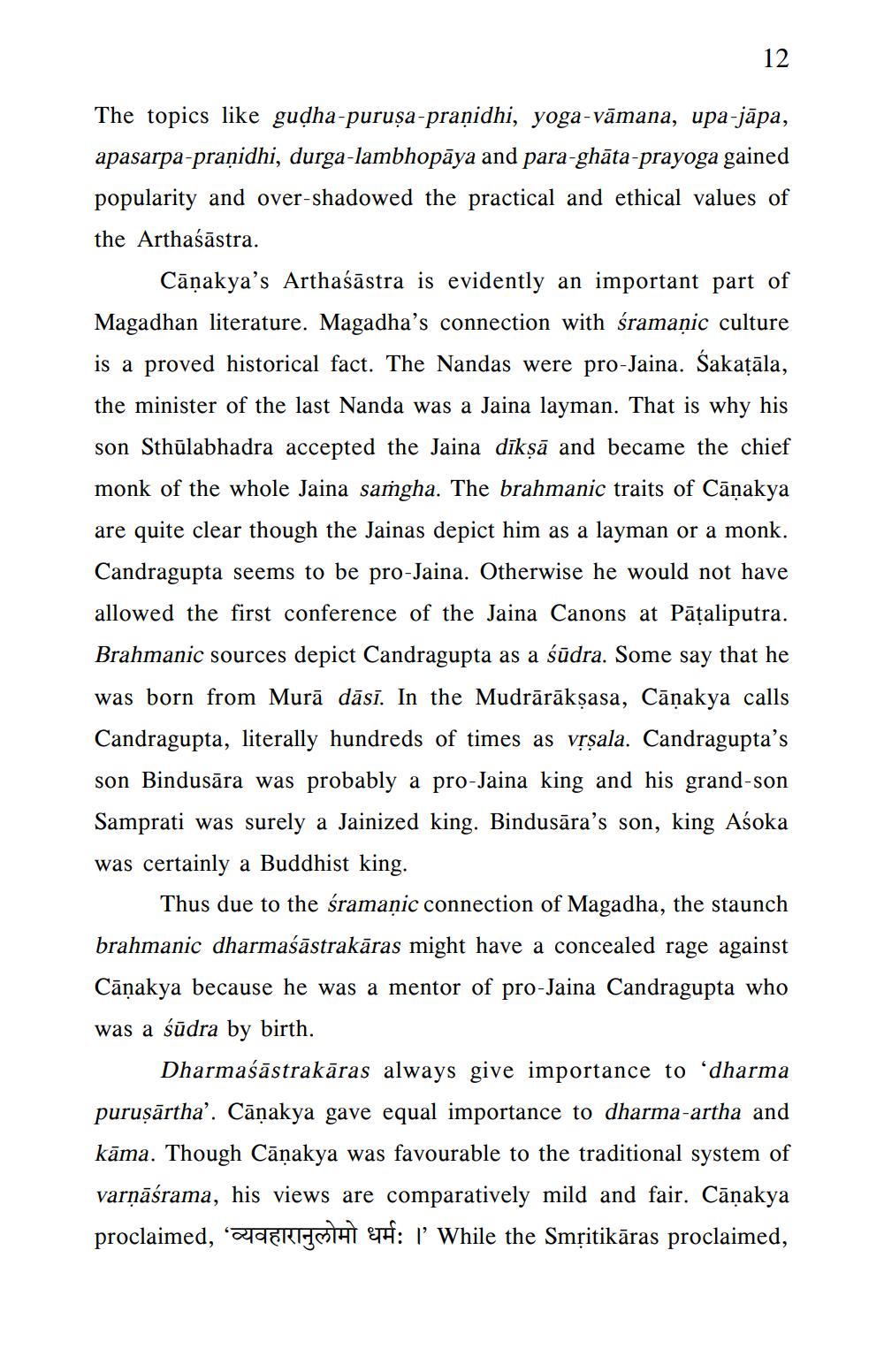________________
12
The topics like gudha-puruṣa-praạidhi, yoga-vāmana, upa-jāpa, apasarpa-praņidhi, durga-lambhopāya and para-ghāta-prayoga gained popularity and over-shadowed the practical and ethical values of the Arthaśāstra.
Cāņakya's Arthaśāstra is evidently an important part of Magadhan literature. Magadha's connection with śramaņic culture is a proved historical fact. The Nandas were pro-Jaina. Sakațāla, the minister of the last Nanda was a Jaina layman. That is why his son Sthūlabhadra accepted the Jaina dīkņā and became the chief monk of the whole Jaina samgha. The brahmanic traits of Cāņakya are quite clear though the Jainas depict him as a layman or a monk. Candragupta seems to be pro-Jaina. Otherwise he would not have allowed the first conference of the Jaina Canons at Pāțaliputra. Brahmanic sources depict Candragupta as a śūdra. Some say that he was born from Murā dāsi. In the Mudrārākṣasa, Cāņakya calls Candragupta, literally hundreds of times as vrşala. Candragupta's son Bindusāra was probably a pro-Jaina king and his grand-son Samprati was surely a Jainized king. Bindusāra's son, king Aśoka was certainly a Buddhist king.
Thus due to the śramaņic connection of Magadha, the staunch brahmanic dharmaśāstrakāras might have a concealed rage against Cāņakya because he was a mentor of pro-Jaina Candragupta who was a sūdra by birth.
Dharmaśāstrakāras always give importance to‘dharma puruşārtha’. Cāņakya gave equal importance to dharma-artha and kāma. Though Cāņakya was favourable to the traditional system of varņāśrama, his views are comparatively mild and fair. Cāņakya proclaimed, “ZTERIJMUHT TH: l’ While the Smțitikāras proclaimed,




